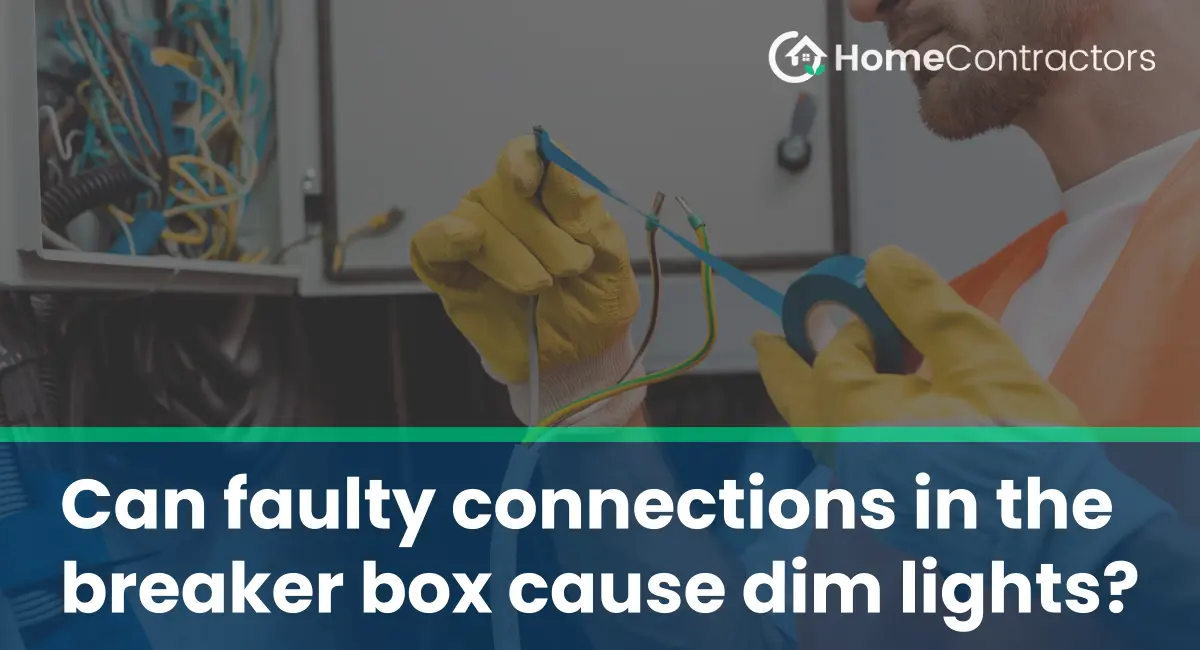A well-functioning electrical system is crucial for the smooth operation of a building. However, sometimes we may encounter electrical issues that can be puzzling and frustrating. One such problem is dim lights. Dim lights are not only inconvenient but can also indicate an underlying electrical issue. In this article, we will explore whether faulty connections in the breaker box can cause dim lights and discuss how to identify and resolve this problem.
Understanding the Breaker Box:
The breaker box, also known as the electrical panel, is responsible for distributing electricity throughout a building. It is the central hub where all the electrical circuits originate and are protected by circuit breakers. These breakers act as safeguards, cutting off the power supply in case of an electrical overload or short circuit.
Causes of Dim Lights:
There can be several reasons behind dim lights, including faulty connections in the breaker box. Some common causes include:
1. Overloaded circuits:
- When multiple high-powered appliances are running simultaneously, an overload can occur, leading to dim lights.
- Overloads cause the circuit to draw excessive current, resulting in voltage drops and dimming of lights.
2. Loose connections:
- Over time, the connections inside the breaker box can become loose.
- Loose connections cause resistance in the circuit, resulting in a decrease in voltage, leading to dim lights.
3. Faulty circuit breaker:
- A circuit breaker that is malfunctioning or not properly sized for the electrical load can cause dim lights.
- Faulty breakers may not trip when necessary, causing an ongoing strain on the circuit and resulting in dimming lights.
Identifying Faulty Connections:
To determine if faulty connections in the breaker box are the cause of dim lights, there are a few steps you can take:
1. Check individual circuits:
- Start by turning off all lights and appliances connected to the circuit experiencing dim lights.
- Then, turn on one light at a time and observe if the brightness remains consistent or if it dims.
- If only a specific light or set of lights dim, it may indicate a specific circuit issue.
2. Inspect the breaker box:
- Switch off the main electrical power before attempting any inspection or repair work in the breaker box.
- Look for any loose or burnt connections inside the breaker box.
- Ensure all connections are tight and properly secured.
3. Consult a professional:
- If you are unsure about handling electrical work or unable to identify the problem, it is always best to consult a licensed electrician.
- An electrician will have the necessary skills and equipment to diagnose and resolve any issues with the breaker box.
Resolving the Issue:
If the dimming lights are indeed caused by faulty connections in the breaker box, there are a few potential solutions:
1. Tightening connections:
- Ensure all connections in the breaker box are securely tightened.
- Use appropriate tools and follow safety precautions when working with electrical components.
2. Replacing faulty breakers:
- If a specific circuit breaker is suspected to be causing the dim lights, it may need to be replaced.
- Consult an electrician to determine the correct size and type of breaker required for your electrical load.
3. Upgrading the electrical system:
- In cases where the dimming lights persist despite addressing loose connections or faulty breakers, it may be necessary to upgrade the electrical system.
- This could involve rewiring, installing additional circuits, or upgrading the total capacity of the breaker box.
Faulty connections in the breaker box can indeed cause dim lights. It is important to promptly address this issue to ensure the safety and efficiency of your electrical system. By understanding the common causes and following the steps to identify and resolve the problem, you can enjoy a well-illuminated and trouble-free environment in your building. Remember, if you are unsure or uncomfortable working with electrical components, always seek the assistance of a professional electrician.
